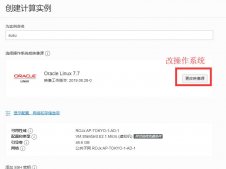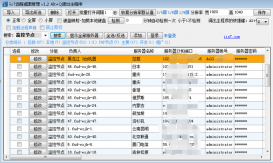一、背景
Openstack的Heat是在H版之后加入的组件,旨在创建一套业务流程,更轻松的管理一个集群。集群内的虚拟机可以作为一个整体,统一的为客户提供服务。Heat中把功能定义成资源,在Heat中会用到Nova,Neutron,Ceilometer等组件,这些都可以看成是资源,通过模板文件来描述,模板文件可以是yaml格式,也可以是json格式,一般是yaml格式。
AutoScaling的概念最早出现在AWS,AutoScaling是一项Web服务,目的是根据用户定义的策略,时间表的运行状态检查启动或终止虚拟机,达到自动伸缩。
Openstack里的Auto Scale是由Heat和Ceilometer模块一起配合完成的。Ceilometer负责收集处理性能数据,一旦达到Heat模版里定义的阀值,就发告警信息给heat-engine,由heat-engine调动Heat模版里定义的其它的OpenStack资源实现auto scale。
二、Heat AutoScaling Resources
实现AutoScaling功能涉及到的资源如下:
1.AWS::AutoScaling::AutoScalingGroup
伸缩组是具有相同应用场景的实例的集合,定义了组内实例数的最大值和最小值,冷却时间等等。
注:冷却时间是指一个伸缩活动后的一段锁定时间,在这个时间内不能进行其他的伸缩活动。
语法如下:
|
1
2
3
4
5
6
7
8
9
10
11
12
13
14
15
16
17
18
19
20
21
22
|
{ "Type" : "AWS::AutoScaling::AutoScalingGroup", "Properties" : { "AvailabilityZones" : [ String, ... ], "Cooldown" : String, "DesiredCapacity" : String, "HealthCheckGracePeriod" : Integer, "HealthCheckType" : String, "InstanceId" : String, "LaunchConfigurationName" : String, "LoadBalancerNames" : [ String, ... ], "MaxSize" : String, "MetricsCollection" : [ MetricsCollection, ... ] "MinSize" : String, "NotificationConfigurations" : [ NotificationConfigurations, ... ], "PlacementGroup" : String, "Tags" : [ Auto Scaling Tag, ..., ], "TargetGroupARNs" : [ String, ... ], "TerminationPolicies" : [ String, ..., ], "VPCZoneIdentifier" : [ String, ... ] }} |
2.AWS::AutoScaling::LaunchConfiguration
伸缩配置定义了用于弹性伸缩的实例的配置。由AutoScalingGroup用于配置组内的实例。
语法如下:
|
1
2
3
4
5
6
7
8
9
10
11
12
13
14
15
16
17
18
19
20
21
22
|
{ "Type" : "AWS::AutoScaling::LaunchConfiguration", "Properties" : { "AssociatePublicIpAddress" : Boolean, "BlockDeviceMappings" : [ BlockDeviceMapping, ... ], "ClassicLinkVPCId" : String, "ClassicLinkVPCSecurityGroups" : [ String, ... ], "EbsOptimized" : Boolean, "IamInstanceProfile" : String, "ImageId" : String, "InstanceId" : String, "InstanceMonitoring" : Boolean, "InstanceType" : String, "KernelId" : String, "KeyName" : String, "PlacementTenancy" : String, "RamDiskId" : String, "SecurityGroups" : [ SecurityGroup, ... ], "SpotPrice" : String, "UserData" : String }} |
3.AWS::AutoScaling::ScalingPolicy
为auto scale group添加伸缩的策略,定义了具体的扩展或者收缩的操作,以及伸缩的数量。
语法如下:
|
1
2
3
4
5
6
7
8
9
10
11
12
13
14
|
{ "Type" : "AWS::AutoScaling::ScalingPolicy", "Properties" : { "AdjustmentType" : String, "AutoScalingGroupName" : String, "Cooldown" : String, "EstimatedInstanceWarmup" : Integer, "MetricAggregationType" : String, "MinAdjustmentMagnitude" : Integer, "PolicyType" : String, "ScalingAdjustment" : Integer, "StepAdjustments" : [ StepAdjustments, ... ] }} |
此外,Heat中AutoScaling还需配合OS::Ceilometer::Alarm使用,由Alarm监控实例的运行状况,一旦超过阈值,则会产生告警。
三、 Heat AutoScaling Template
下面是一个简单的例子:
|
1
2
3
4
5
6
7
8
9
10
11
12
13
14
15
16
17
18
19
20
21
22
23
24
25
26
27
28
29
30
31
32
33
34
35
36
37
38
39
40
41
42
43
44
45
46
47
48
49
50
51
52
53
54
55
56
57
58
59
60
61
62
63
64
65
66
67
68
69
70
71
72
73
74
75
76
77
78
79
80
81
82
83
84
85
86
87
88
89
90
91
92
93
94
95
96
97
98
99
100
101
102
103
104
105
106
107
108
109
110
111
112
113
114
115
116
117
118
119
120
121
122
123
124
125
126
127
128
129
130
131
132
133
134
135
136
137
138
139
140
141
142
143
144
145
146
147
148
149
150
151
152
153
154
|
heat_template_version: 2013-05-23description: Heat template for autoscalingparameters:#定义一些变量 flavor: type: string default: m1.small image: type: string default: 1a2b3c4f-1a2b-3c4f-5d6e-4130ff5203de availability_zone: type: string default: nova alarm_scaleout_threshold:#阈值 type: number default: 80 alarm_scalein_threshold:#阈值 type: number default: 20resources: neutron_network: type: OS::Neutron::Net properties: name: {get_param: "OS::stack_name"} neutron_subnet: type: OS::Neutron::Subnet properties: name: {get_param: "OS::stack_name"} network_id: { get_resource: neutron_network } cidr: '192.168.111.0/24' gateway_ip: '192.168.111.1' allocation_pools: - start: '192.168.111.2' end: '192.168.111.254' neutron_router: type: OS::Neutron::Router properties: name: {get_param: "OS::stack_name"} add_router_interface: type: OS::Neutron::RouterInterface properties: router_id: { get_resource: neutron_router } subnet_id: { get_resource: neutron_subnet } nova_server_security_group: type: OS::Neutron::SecurityGroup properties: description: 'security group for VM' name: {get_param: "OS::stack_name"} rules: [ {direction: 'ingress', remote_ip_prefix: '0.0.0.0/0', port_range_min: 0, port_range_max: 30000, ethertype: IPv4, protocol: 'tcp'}, {direction: 'egress', remote_ip_prefix: '0.0.0.0/0', port_range_min: 0, port_range_max: 65535, ethertype: 'IPv4', protocol: 'tcp'}, {direction: 'egress', remote_ip_prefix: '0.0.0.0/0', port_range_min: 0, port_range_max: 65535, ethertype: 'IPv4', protocol: 'udp'}, {direction: 'ingress', remote_ip_prefix: '0.0.0.0/0', port_range_min: null, port_range_max: null, ethertype: 'IPv4', protocol: 'icmp'}, {direction: egress, remote_ip_prefix: '0.0.0.0/0', port_range_min: null, port_range_max: null, ethertype: 'IPv4', protocol: 'icmp'} ] launch_config:#Scale group中的实例的配置 type: AWS::AutoScaling::LaunchConfiguration properties: ImageId: { get_param: image }#实例使用的image InstanceType: { get_param: flavor }#实例使用的flavor SecurityGroups: [ get_resource: nova_server_security_group ] UserData: |#实例启动时运行的脚本 #!/bin/bash passwd root << EOD 123456 123456 EOD server_group:#伸缩组 type: AWS::AutoScaling::AutoScalingGroup properties: AvailabilityZones: [] Cooldown: '60'#冷却时间 LaunchConfigurationName: { get_resource: launch_config }#组中实例的配置 MinSize: '1'#最小实例数 MaxSize: '4'#最大实例数 VPCZoneIdentifier: [ get_resource: neutron_subnet ] scaleout_policy:#向上扩展的策略 type: AWS::AutoScaling::ScalingPolicy properties: AdjustmentType: ChangeInCapacity#heat 支持三种调整方式:change_in_capacity (new = current + adjustment), #exact_capacity (new = adjustment), percent_change_in_capacity (在current 的基#础上上按照 adjustment 的 百分比调整) AutoScalingGroupName: { get_resource: server_group } ScalingAdjustment: '1'#每次的调整量,即增加一个实例 scalein_policy:#向下收缩的策略 type: AWS::AutoScaling::ScalingPolicy properties: AdjustmentType: ChangeInCapacity AutoScalingGroupName: { get_resource: server_group } ScalingAdjustment: '-1'#每次的调整量,即减少一个实例 neutron_port: type: OS::Neutron::Port properties: network_id: { get_resource: neutron_network } fixed_ips: - subnet_id: { get_resource: neutron_subnet } security_groups: [ { get_resource: nova_server_security_group } ] alarm_scaleout: #定义一个 ceilometer alarm type: OS::Ceilometer::Alarm properties: description: Scale-up if the average CPU > 80% for 10 minute meter_name: cpu_util #监控虚拟机的 cpu_util statistic: avg #statistic 的计算方法为 avg 即平均值法 period: 600 #统计周期 evaluation_periods: 1 #连续几个周期才算有效 repeat_actions: true threshold: { get_param: alarm_scaleout_threshold }# cpu_util 的阈值 alarm_actions: #该告警在alarm 状态时的 action。 - {get_attr: [scaleout_policy, AlarmUrl]} matching_metadata: {'metadata.user_metadata.groupname': {get_resource: 'server_group'}} comparison_operator: gt #检测值和阈值的比较方式为 gt 即大于 alarm_scalein: type: OS::Ceilometer::Alarm properties: description: Scale-down if the average CPU < 20% for 10 minutes meter_name: cpu_util statistic: avg period: 600 evaluation_periods: 1 repeat_actions: true threshold: { get_param: alarm_scalein_threshold } alarm_actions: - {get_attr: [scalein_policy, AlarmUrl]} matching_metadata: {'metadata.user_metadata.groupname': {get_resource: 'server_group'}} comparison_operator: lt#检测值和阈值的比较方式为 lt 即小于outputs: scale_in_url: value: { get_attr: [ scalein_policy, AlarmUrl ] } scale_out_url: value: { get_attr: [ scaleout_policy, AlarmUrl ] } |
这个stack的功能是监控实例的CPU使用率,当CPU使用率大于80%时,将会启动一个新的实例,当CPU使用率小于20%,将会减少一个实例。
感谢阅读,希望能帮助到大家,谢谢大家对本站的支持!
原文链接:http://blog.csdn.net/heaven619/article/details/53420220


















